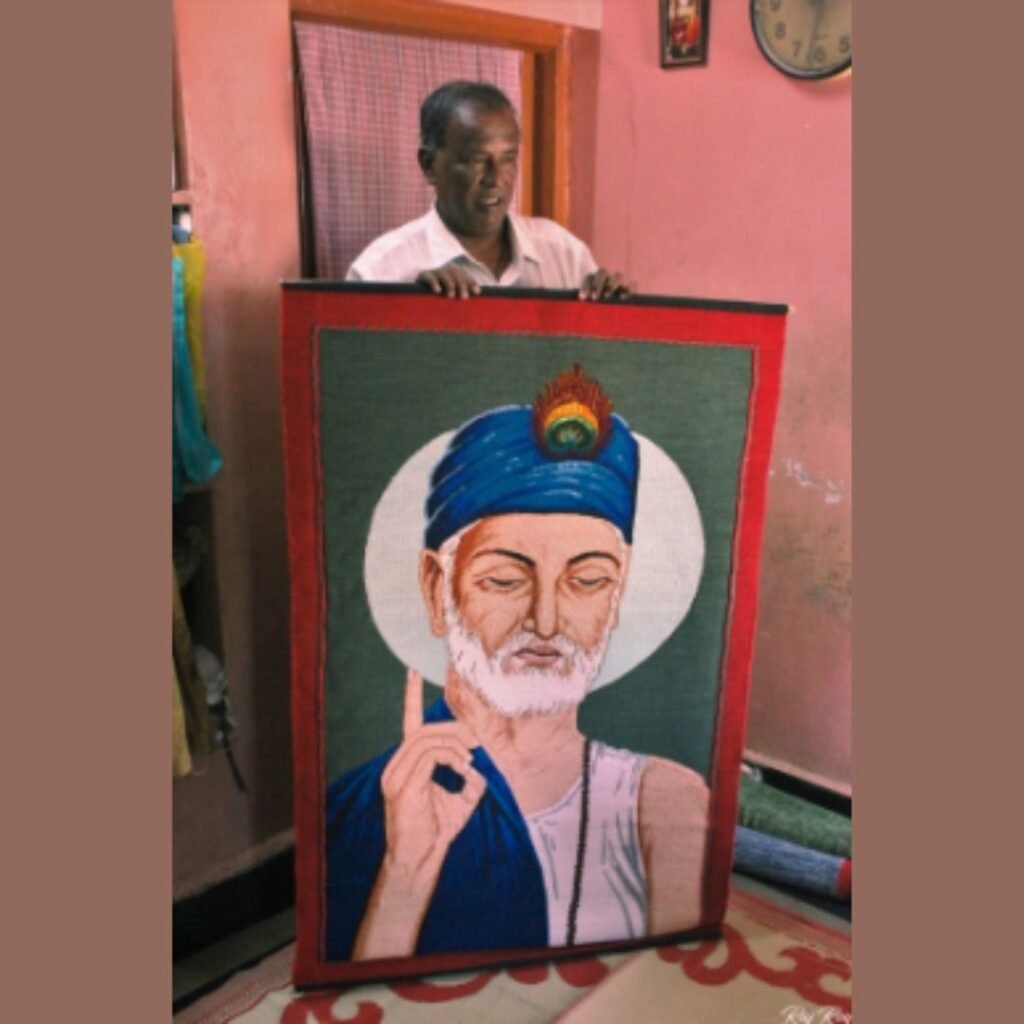Solapur is known for its rich heritage of Handlooms & Handicrafts. It is also known for its
age-old weaving tradition, and one of these traditionally weaved items includes the wall
hanging. The handicraft of wall hanging is about 40 years old and is famous for its unique
designs and ornamental nature.

Associate Professor,
Nift- mumbai
The multi-linguistic city Solapur, located in the southwestern region, is the fourth largest
urban agglomeration in Maharashtra State. The city is a composition of 16 villages woven
together with a thread of cultural diversity and craft heritage. Solapur city portraiture
typically communicates beautiful landscape, blossomed flame trees, tranquil lake view,
freely moving ducks on the lakeside, serene sunset, picturesque flower market, ornamented
temples, graffiti walls, small shops on the busy streets, and men roaming in the city wearing
white Maharashtrian topi.
Handloom and Handicrafts of Solapur narrate the mesmerizing story of its rich culture and
heritage. The crafts heritage of Solapur has evolved, sustained, and transferred from
generation to generation. Solapur wall hanging is a poetic expression of warp and weft
threads by the artisans of the Padmashali community. These beautiful wall accents adorn
the walls and compete with paintings as artisans weaved portraits, still-life paintings, logos,
abstract motifs, and many other creative and innovative art pieces on the wall hanging. The
Padmashali community, who migrated from Telangana and Andhra Pradesh and settled in
Maharashtra, are the two communities involved in the making process of a wall hanging. It
is eco-friendly and sustainable handicraft that provides a source of income and employment
opportunity for many households in Solapur. The raw material procured for wall hanging is
from the local market of Solapur.


Solapur wall hangings are sustainable and ethical and do not pose health risks to the
artisans. These handwoven products are also known for their durability and uniqueness.
Local markets provide less opportunity for the sale of the wall hangings and are either sold
in showrooms, exhibitions, or on the global market. Its demand in the local market has
reduced in recent years. Many artisans have less knowledge and inadequate resources for
marketing channels. They have a limited supply of products to cater to a large audience. The
artisans are looking for a proper marketing channel for their products.

The artisans replaced the simple monochrome classic designs with polychrome landscapes
and portraitures. Progressive artisans are working more towards product customization
based on consumers’ needs and desires. They are open to innovative weaving techniques,
design concepts, and creative yarns for developing new products. They commonly use Zari,
wool, silk, jute, and cotton yarns. Following the trend, the artisans brought variation in their
designs. Their diversified product design includes ranges like Shabnam bags, durries, cushion
covers, floor mats, Venetian blinds, curtains, table runners, and linens. One of the most
creative interventions includes an intricately woven dining table mat runner with four-point
cotton and zari threads. Table runners woven with fine back yarns and simple geometric
golden motifs matched the contemporary design language. The indigo-coloured layered
design in the background represented the water, and the golden zari circles represented
sunlight reflected on the water. This unique contemporary design will be displayed at one of
the international trade fairs.

Durries and carpets are available in polychromatic or monochromatic colour schemes to
grab the attention of potential customers. and fit in various space themes. They are also
using pastel and neon bright shades in their designs to match up with the global trends.
Colour variation in design is achieved by experimenting on a weft, while the black colour of
the warp is maintained as fixed. Artisans introduced the method of cutwork and precisely
tied knots to achieve variation in the traditional design of the wall hangings and to change
its attributes to a more intricate and appealing design. Bells, wooden beads, shells, and
mirrors used in wall hanging add value to its design. Brass bells used in the earlier days are
now replaced by iron bells to cut down on the material cost. To increase the durability and
reduce the possibility of damage artisans are using metal dowels in wall hanging designs
over teak wood dowels.
Artisans get a better understanding and exposure to the market, product, colours, design,
and trends after participating in government-organized national or international exhibitions.
There is a huge scope for this craft to flourish. Designers, NGOs, Govt organizations,
educational design institutes, start-ups, retailers, and exporters, are contributing to
uplifting the craft cluster. The wall hanging of Solapur has proved to be the most exquisite
decorative artifact that adds value to the interior spaces and adorns the walls of residential
or commercial spaces. The combination of diversity and hand skill has produced some of the
most mesmerizing creations earning a great demand from various parts of the country.

